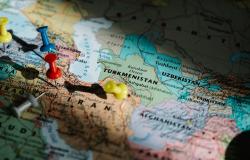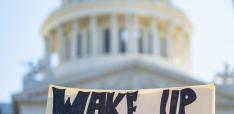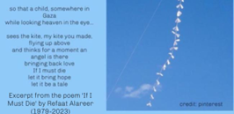The “Snapback” of UN Sanctions amid Iran’s Strategic Perplexity (Part I)

In this two part series, Ali Fathollah-Nejad and Isabella Krämer argue that Iran’s failure to avoid 'snapback' is a symptom of the regime’s post-war lack of orientation and leverage. (Part 2 here)
On September 28, the rigorous, internationally binding UN sanctions that were in place before the 2015 Joint Comprehensive Plan of Action (JCPOA), or the Iran nuclear deal, “snapped back”, following the triggering of the corresponding JCPOA mechanism by Germany, France and the UK (the so-called E-3) in late August citing Iran’s nuclear intransigence. To avoid snapback, the E3 had demanded Tehran to resume cooperation with the International Atomic Energy Agency (IAEA) regarding the inspection regime of its contested nuclear program and to seek a diplomatic settlement with the United States. Now, the reimposed sanctions will once again freeze Iranian assets overseas, block arms transactions with Tehran, and impose penalties on the development of Iran’s nuclear and ballistic-missile programs, among other restrictions. This article discusses Tehran’s failed last-ditch efforts to avoid the reimposition of “snapback” sanctions, its limited, highly contested choice of responses as well as an outlook for its economy, given its persistent economic crisis.
On the eve of snapback
After the UN Security Council voted on September 19 to discontinue sanctions relief for the Islamic Republic, effectively paving the way for “snapback” sanctions to return on September 28, Tehran engaged in a final, futile attempt to negotiate with the E3. While in New York City for the UN General Assembly, Iran’s Foreign Minister Abbas Araghchi held meetings on September 22 with Rafael Grossi, Director-General of the International Atomic Energy Agency (IAEA), as well as on September 23 with his E3 counterparts, the Foreign Ministers of Germany, France, and the UK (the European signatories to the 2015 JCPOA), along with the EU High Representative for Foreign Affairs and Security Policy Kaja Kallas. Prior to the meeting, Araghchi had accused the E3 of threatening the Islamic Republic, adding that he hoped the two sides could “find a diplomatic solution in the coming days, otherwise Tehran will take appropriate measures". However, no breakthrough was achieved during the meeting between Araghchi and his E3 counterparts, with the German Foreign Office urging Iran in a September 23 post on X to take action, reiterating that the E3 were “prepared to complete the snapback process” while also stressing their commitment to a long-term diplomatic resolution.
In addition to Araghchi, Iran’s President Masoud Pezeshkian was also present during the UN General Assembly (UNGA), giving a speech on September 23 where he accused the E3 of displaying “bad faith” and attempting “to bring the proud people of Iran to their knees”.
Meanwhile, U.S. President Donald Trump, in his UNGA address on the same day, claimed that after his return to office in January 2025 he had offered the Islamic Republic’s Supreme Leader Ali Khamenei “full cooperation in exchange for a suspension of Iran’s nuclear program”, then proceeded to accuse Tehran of having dismissed this offer through its continued sponsorship of regional militias.
At the end, Tehran passed the very last opportunity to avert the reimposition of UN sanctions. Over the preceding weeks, even as the threat of “snapback” became more tangible, the Islamic Republic had remained largely passive, wrapped in defiant rhetoric, but lacking the kind of substantive engagement the crisis called for. Rather, Tehran relied on a familiar playbook of symbolic concessions, most notably the Cairo Agreement with the IAEA (a technical agreement not made public), intended to buy time and feign a willingness to compromise. Ultimately, these strategies and their limited scope not only failed to sway the E3 but also backfired, reinforcing the perception that Iran was merely maneuvering to buy time.
If anything, Iran appeared to be moving in the opposite direction, away from the E3’s demands. In a televised address, a rarity since the 12-Day War, Supreme Leader Ali Khamenei outright rejected the prospect of talks with the U.S. and reaffirmed Tehran’s commitment to domestic uranium enrichment, branding Washington’s “zero enrichment” demand as nothing short of “dictation”. His remarks as well as those by the new-old Secretary of the Supreme National Security Council (SNSC) Ali Larijani can be read as a deliberate projection of defiance, an established strategy the Islamic Republic has long relied on when facing external pressure. By framing resistance as a matter of national pride, Iran’s leadership attempts to transform the return of “snapback” sanctions from an outcome of diplomatic miscalculation and failure into a deliberate assertion of principle and defiance, thereby trying to save face. In reality, the Islamic Republic would clearly have preferred to avoid this situation, not least in order to silence internal criticisms and smooth over factional divides in this time of crisis.
Diplomacy still possible but arduous
Nevertheless, the reimposition of UN sanctions will not end the diplomatic process altogether. The E3 and Iran’s Foreign Minister Araghchi alike continue to present themselves as committed to a negotiated solution, even after the reimposition of “snapback” sanctions. But renegotiating after “snapback” will be a highly difficult endeavour. Any future talks are likely to reopen the most contentious issues of the pre-12-Day-War period in negotiations: the dismantling of Iran’s nuclear program, curbing its missile program (according to Larijani, the U.S. demand is to limit its reach to 500 km, which he says is unacceptable to Tehran) and the scaling back of its regional proxy network. These conditions, long rejected by the Islamic Republic as existential threats, would return to the forefront, making any compromise complicated to reach. Additionally, absent of far-reaching Iranian concessions, Washington’s willingness to return to the negotiating table, a central demand of the E3, remains unclear.
Overall, Iran’s current situation appears to be a costly miscalculation and a symptom of the regime’s post-war lack of orientation and leverage. In trying to avoid what it denounces as a Trumpian diktat, Tehran has only delayed the inevitable while setting itself up for even higher obstacles down the road. The regime may draw solace from its defiant stance, but the price of such symbolic resistance will be mounting international isolation, worsening economic hardship, and an even longer, more arduous path toward sanctions relief in the aftermath of “snapback”.
To understand Tehran’s reaction to the reimposition of “snapback” sanctions as well as its ongoing strategic perplexity, please read Part II here.
Ali Fathollah-Nejad Director, Center for Middle East and Global Order (CMEG).
Isabella Krämer, Junior Fellow, CMEG.
Photo by Lara Jameson


